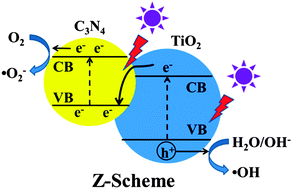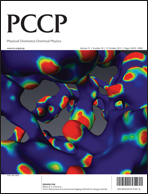Enhanced photocatalytic performance of direct Z-scheme g-C3N4–TiO2 photocatalysts for the decomposition of formaldehyde in air
Abstract
Formaldehyde (HCHO) is a major indoor pollutant and long-term exposure to HCHO may cause health problems such as nasal tumors and skin irritation. Photocatalytic oxidation is considered as the most promising strategy for the decomposition of HCHO. Herein, for the first time, a direct g-C3N4–TiO2 Z-scheme photocatalyst without an electron mediator was prepared by a facile calcination route utilizing affordable P25 and urea as the feedstocks. Photocatalytic activities of the as-prepared samples were evaluated by the photocatalytic oxidation decomposition of HCHO in air. It was shown that the photocatalytic activity of the prepared Z-scheme photocatalysts was highly dependent on the g-C3N4 content. At the optimal g-C3N4 content (sample U100 in this study), the apparent reaction rate constant was 7.36 × 10−2 min−1 for HCHO decomposition, which exceeded that of pure P25 (3.53 × 10−2 min−1) by a factor of 2.1. The enhanced photocatalytic activity could be ascribed to the formation of a g-C3N4–TiO2 Z-scheme photocatalyst, which results in the efficient space separation of photo-induced charge carriers. Considering the ease of the preparation method, this work will provide new insights into the design of high-performance Z-scheme photocatalysts for indoor air purification.


 Please wait while we load your content...
Please wait while we load your content...